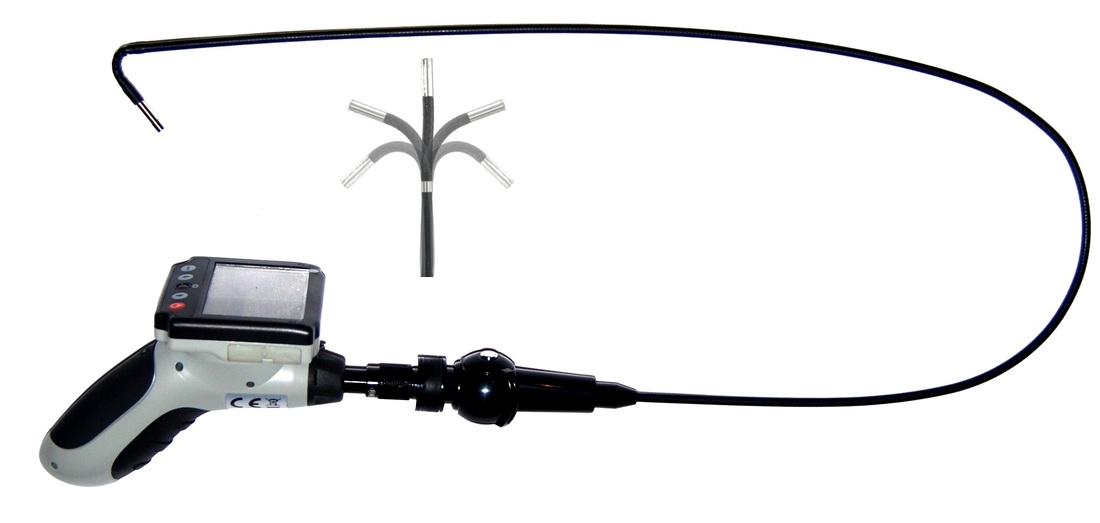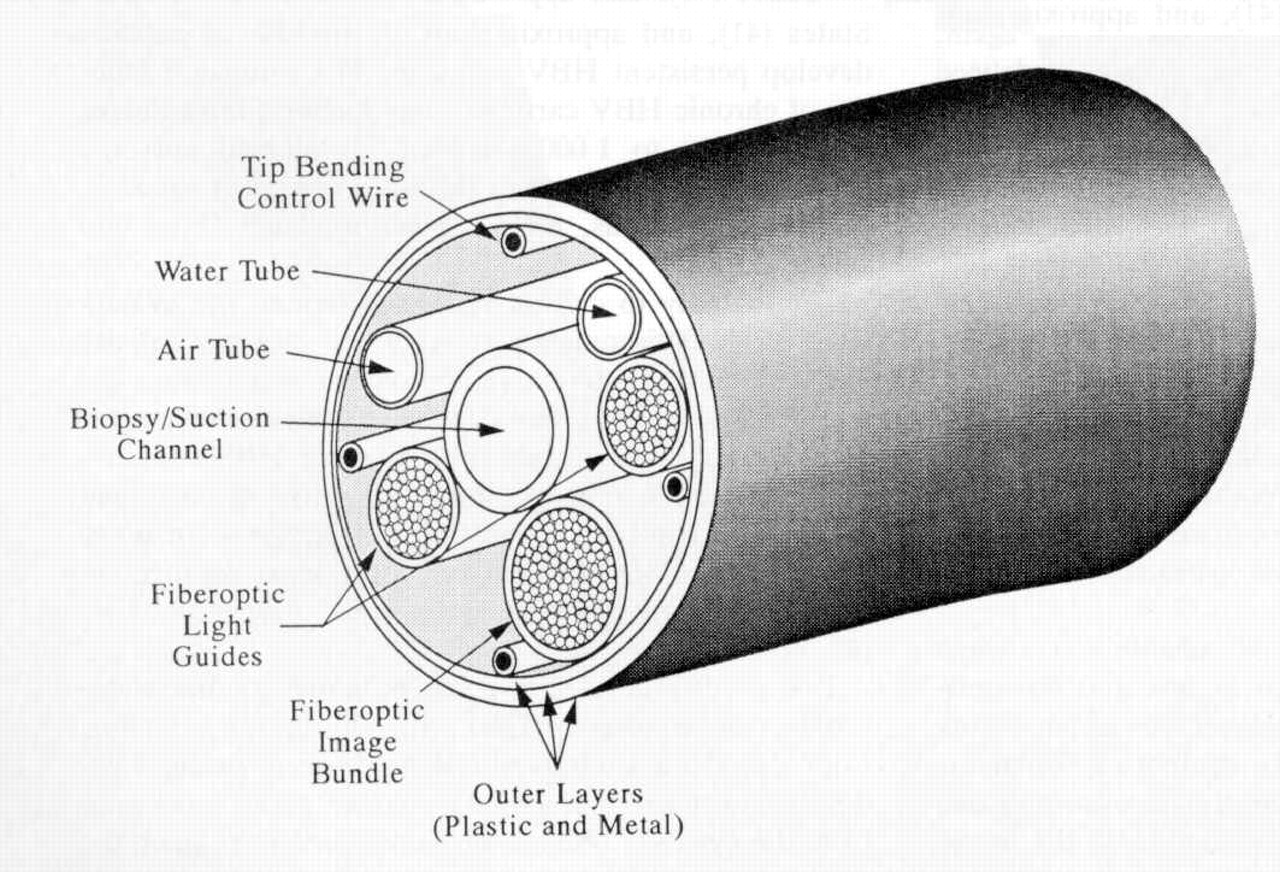A fiberscope is the snakelike, fiber-optic camera that doctors use during an endoscopy. The tips of these scopes can articulate: you can control the rate at which they bend in one or more directions.
For instance, the tip on one end of this fiberscope can bend in various directions and at various angles. You control this via the controller on the other end.
How is this done? I'm assuming it involves a sort of spring/flexible tube and some sort of cable system that controls the rate at which the spring/tube bends, but I can't imagine how this would work.
Edit: This image from this article refers to a (or possibly four) "tip bending control wire(s)".
I guess the question is: what do these wires do? Do they bend the tip by contracting/expanding? Is there some sort of mechanical device in the "bendy" part that is controlled by these wires?

